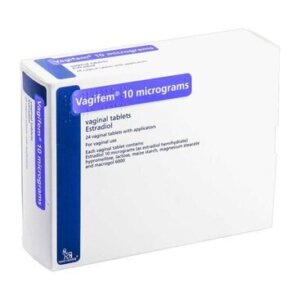 As the winter months step up into high gear, COVID-19 continues to evolve, with new variants posing fresh challenges. Until recently here in the US, HV.1 was the variant responsible for most COVID-19 cases (followed by the variants labeled EG.5 and FL.1.5.1), but according to the Center for Disease Control, another variant has been identified and is quickly taking over. It’s time to start making plans as to how best to keep COVID-19 at bay.
As the winter months step up into high gear, COVID-19 continues to evolve, with new variants posing fresh challenges. Until recently here in the US, HV.1 was the variant responsible for most COVID-19 cases (followed by the variants labeled EG.5 and FL.1.5.1), but according to the Center for Disease Control, another variant has been identified and is quickly taking over. It’s time to start making plans as to how best to keep COVID-19 at bay.
As of December 8th, the CDC projects that JN.1 comprises an estimated 15%-29% of cases in the United States. It projects “that JN.1 will continue to increase as a proportion of SARS-CoV-2 genomic sequences. It is currently the fastest-growing variant in the United States.”
In reality, all of these variants have emerged as significant concerns. Unlike the previously dominant variants, JN.1 is characterized by different initial symptoms, primarily congestion and stuffy noses, nausea, and diarrhea. Despite these changes, the mantra “prevention is better than cure” remains as relevant as ever, with Enovid nasal spray as a formidable defense.
News from the far North
There’s usually a lag between 3 weeks and a month between when the spikes in winter infections hit Canada and the northern European countries and when they manifest in the US. It makes good sense to keep an eye on what’s happening in those climes because it indicates what’s likely to happen in the Northern US states and then down into the rest of the country as winter takes hold.
In Canada, the medical director of the Vancouver Infectious Diseases Centre warned that while it’s not going to be the same as during the COVID-19 pandemic, a range of viral and bacterial infections are all back in circulation, and COVID-19 is still around. On its own, it’s keeping 4,000 people in hospital, and there are twenty or more deaths each day. At the same time, the levels of influenza A (mostly the H1N1 strain) and RSV (respiratory syncytial virus) are starting to increase. The anticipated peak of the flu season is after the first week of January, and BC has already planned to increase its base bed capacity by nearly 10% since all of the current capacity is already being used.
In the UK, seasonal viruses like flu, RSV, and whooping cough have been creating a surge in illnesses nationwide. As of the start of December, ‘flu went up by 50% in just one week. More concern is that a new version of COVID-19 is showing up in the UK. The new COVID variant, JN.1 (formally designated as V-23DEC01), was identified at the end of October. It was flagged as a variant of concern because its spike mutation is known to get through the immune system. The UK health authorities have already tracked 300+ cases, but there’s likely far more because so few people are testing these days.
Symptoms of the new COVID-19 Variants
JN.1 is essentially similar to earlier variants. Its symptomatology includes:
- Nasal congestion
- Stuffy nose
- Nausea
- Diarrhea
- Sore throat
- Dry cough
- Fatigue
- Headache
- Muscle aches
- Fever or chills
Like HV.1, the new variant JN.1 focuses on respiratory symptoms like sore throat and cough, but according to the CDC website, “the continued growth of JN.1 suggests that it is either more transmissible or better at evading our immune systems.”
Protect Yourself Against JN.1 to Keep COVID-19 at Bay.
The core advice for protecting against COVID-19 remains largely the same:
- Vaccination
- Regular testing
- Isolation if positive
- Avoidance of sick individuals
- Utilizing well-ventilated or outdoor spaces for gatherings
- Frequent hand washing
- Mask-wearing in crowded indoor spaces
Enovid antiviral nasal spray continues to be a crucial tool in this arsenal. Its effectiveness against various COVID-19 variants, including JN.1, is backed by robust research and offers an easy-to-use, non-invasive protection method.
Enovid: The Premier Choice for Prevention
Enovid stands out for its ability to create a barrier in the nasal passages, preventing the virus from reaching the lungs. Its effectiveness against a range of COVID-19 mutations, including the new JN.1 variant, is well-documented. The spray’s nitric oxide content is key to its success, offering a 99.9% virus inactivation rate.
The Dual Threat: COVID-19 and Influenza
With the advent of JN.1, the risk of simultaneous influenza and COVID-19 infections remains a concern. Enovid’s broad-spectrum efficacy makes it an invaluable tool in preventing such co-infections.
In conclusion, while the emergence of the JN.1 variant presents new challenges, the principles of COVID-19 prevention remain consistent. To keep COVID-19 at bay, vaccination, good hygiene practices, and the strategic use of tools like Enovid nasal spray are key to keeping the virus at bay. Remember, prevention is better than cure in the fight against COVID-19.
FAQ on COVID-19 and Enovid
What is COVID-19?
COVID-19 is a contagious disease caused by the SARS-CoV-2 virus, known for its variable symptoms ranging from mild to severe.
What is an Antiviral Nasal Spray?
Antiviral nasal sprays like Enovid create a physical and chemical barrier in the nasal passages, preventing viruses from incubating and spreading.
How Can Antiviral Spray Help with COVID-19?
To keep COVID-19 at bay, Enovid acts as a sanitizer for the nose, blocking the entry of viruses, including SARS-CoV-2, and reducing the risk of infection.
How is Enovid Administered?
Enovid should be used before and after potential exposure to the virus, with application frequency to keep COVID-19 at bay varying based on the level of risk.
















